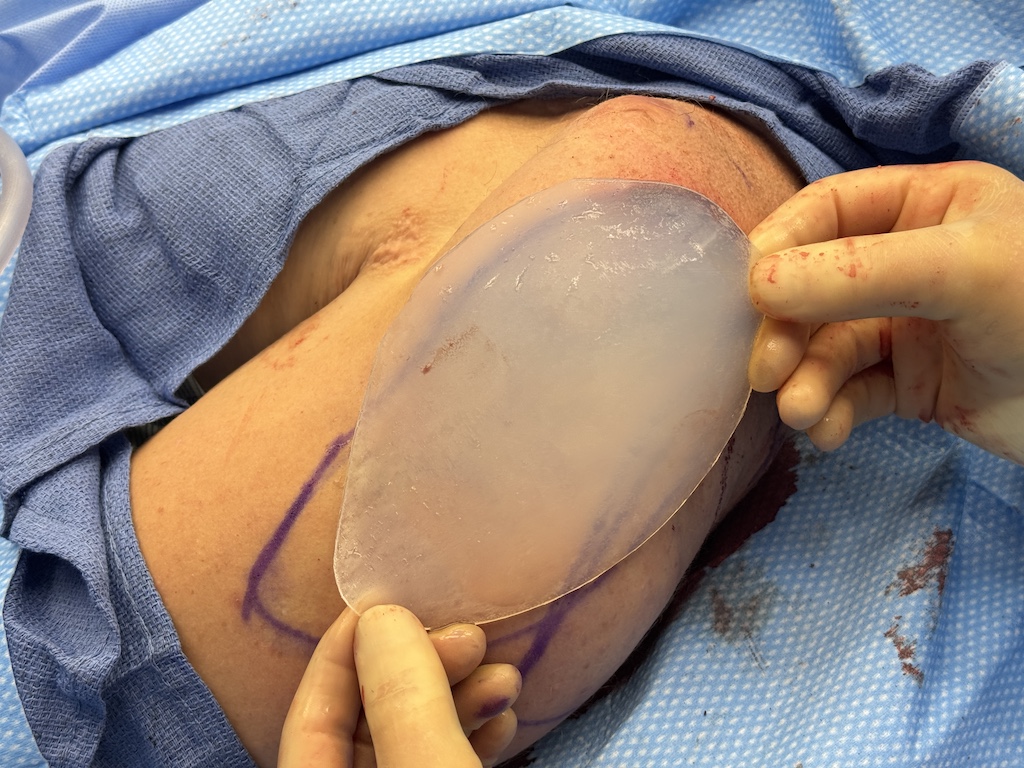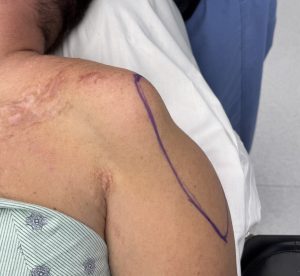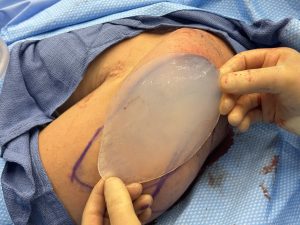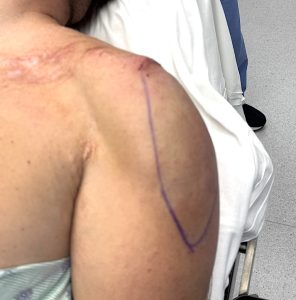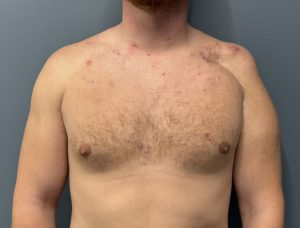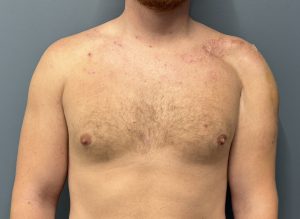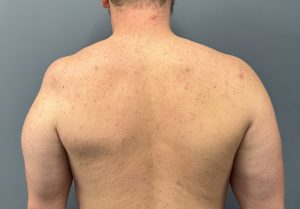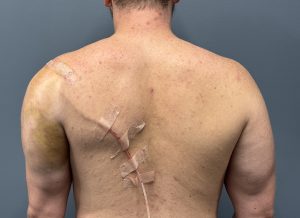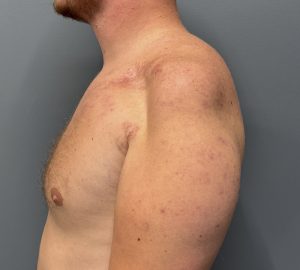Introduction
The shoulder’s outer contour is primarily defined by the deltoid muscles, which give it its characteristic rounded appearance. Anatomically, the deltoid forms a broad, triangular structure arising from the clavicle and scapula and inserting onto the humerus. It consists of three distinct muscle bellies—anterior (clavicular), lateral (acromial), and posterior (spinal)—that collectively produce the shoulder’s curved silhouette. The anterior deltoid blends with the pectoralis major, while the posterior portion overlays the latissimus dorsi; the central belly, the largest and most multipennate, lies between them.
Significant deltoid muscle atrophy most commonly results from axillary nerve injury, which can occur following shoulder surgery or trauma. Atrophy involving all three deltoid heads creates a marked deformity: the shoulder appears skeletonized, with visible bony landmarks such as the humeral head and acromioclavicular (AC) joint. Because the surrounding upper arm musculature remains intact, the resulting hollowed appearance has been described as resembling a “shark bite.”
The only effective method for restoring shoulder contour in such cases is through custom implant reconstruction. Separate implants are designed for each deltoid region, with the lateral and posterior muscles being the most critical for aesthetic correction. Although absence of the anterior deltoid produces a concavity between the chest and shoulder, implant placement in this area carries higher risk due to limited soft-tissue coverage and increased motion stress.
Case Study
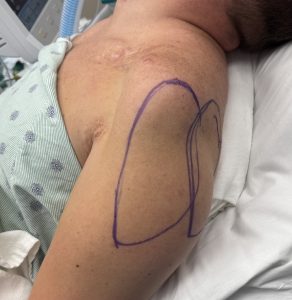
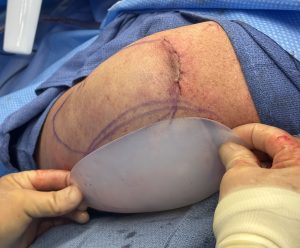
A second incision, positioned high near the scapula, was used for posterior implant placement. The posterior pocket was developed separately from the lateral pocket to maintain distinct compartments. Following implant insertion, the incision was closed over a drain.
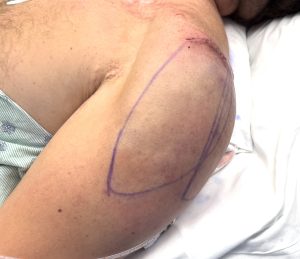
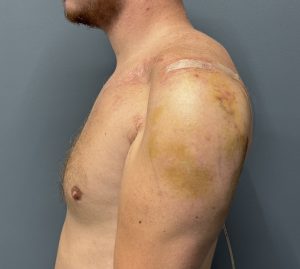
Discussion
Custom implants remain the definitive treatment for severe deltoid atrophy caused by axillary nerve injury. While they cannot restore muscle function, they can dramatically improve shoulder shape and symmetry. Implant size, shape, and positioning are critical to achieving a natural appearance. Designs can be created using external surface measurements translated into CAD/CAM models or through 3D MRI-based mirroring from the normal contralateral shoulder.
For optimal correction, two implants are typically required—targeting the lateral and posterior deltoid regions. Although similar in size, the posterior implant is often slightly larger. Placement through high incisions is essential to ensure proper implant positioning and to prevent inferior displacement or shoulder slope. In particular, the lateral implant should be positioned as close to the AC joint as possible to preserve a natural upper shoulder contour and prevent a low, drooping appearance.
Key Points
- Etiology: Significant deltoid atrophy involving all three heads most often results from axillary nerve injury, typically of a compressive nature.
- Treatment: Custom deltoid implants are the only reliable method for restoring shoulder contour, with emphasis on augmenting the lateral and posterior muscle bellies.
- Technique: High incision placement is crucial to prevent inferior implant migration or visible sagging.
Barry Eppley, MD, DMD
World-Renowned Plastic Surgeon

